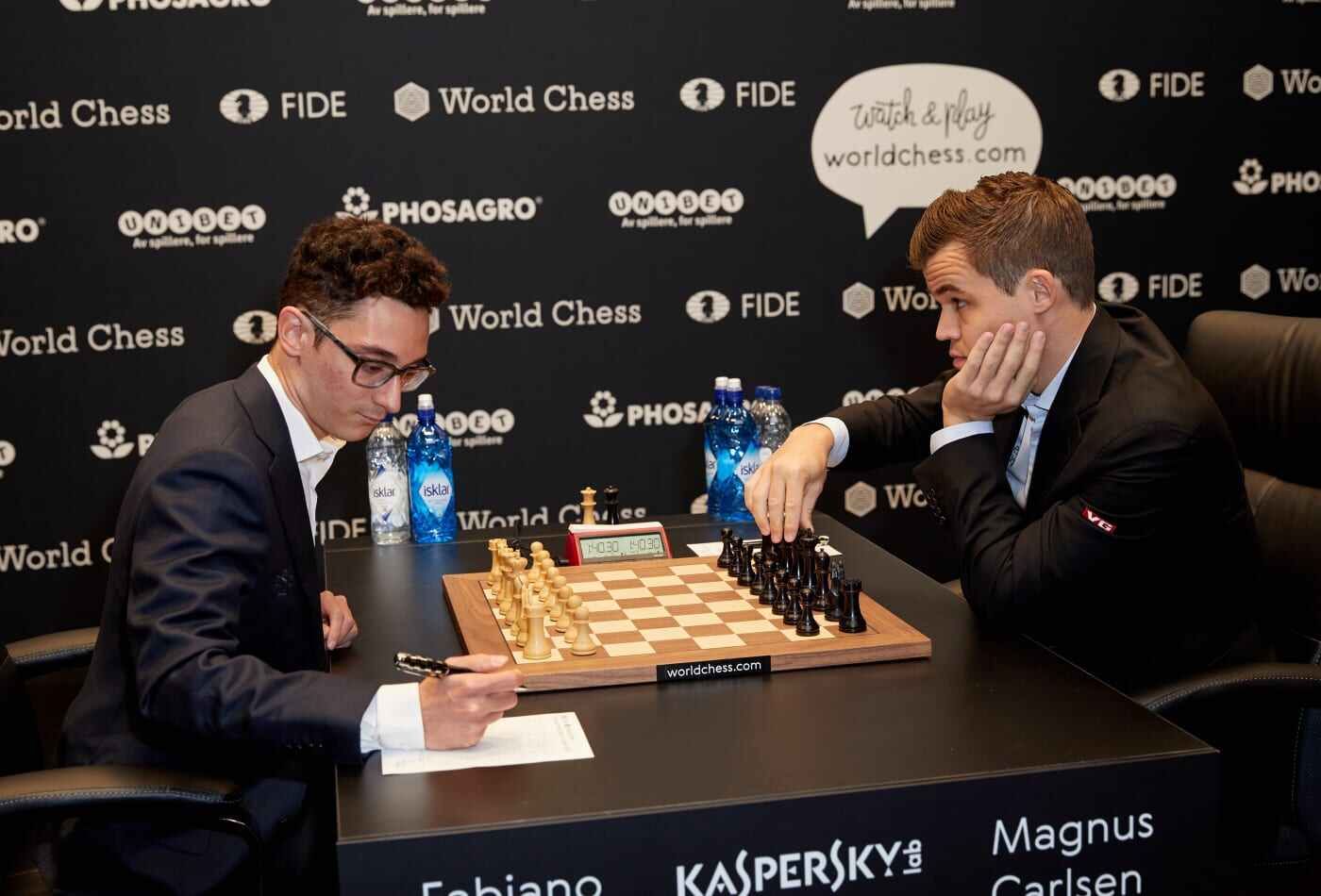Welcome to my article on How To Play Chess For Beginners. If you are new to chess and you want to know how the game works, then you’ve come to the right post. Playing chess requires a board. The chessboard has a grid size of 8 by 8, which means that it is precisely divided into 64 small identical squares which are arrayed across the board.
The board is quite similar to the one used in checkers (commonly called draughts) set by FIDE in 2008. Usually, board colors alternate between the standard white and black. These can truly be any color, but they must have a lighter and darker color scheme.
No matter what colors the board has, the lighter colored squares are referred to as white, or light, boxes, and the darker colored squares are referred to as black, or dark, boxes.
How To Play Chess For Beginners

How The Game of Chess Works (Beginner break down)
The game has two players. One plays the white pieces, and the other controls the black ones. The player with the white chess pieces is “white,” and the player with the black pieces is “black.” The first rule is that the white player makes the first move. At every turn, players must make a move; it is against the rules to skip a move. Even if moving a piece is detrimental, you must make a move, or else the game won’t continue.
The Objective Of The Chess Game
The game has to continue until one king ends up in a “checkmate” situation, or the game is drawn, or until one player chooses to withdraw. In addition, chess can also be played under “timed conditions.” This means that the entire game will be played within a fixed time, whoever exceeds the time limit prior to declaring a “checkmate” will ultimately lose the game.
However, if you are able to capture the opponent’s king before the time runs out, you will win that match. The timed chess game has different types of time control. Players can either have a fixed time or play the game during that entire period, or they can decide to make a certain number of moves within that time period.
In such a planned game, players also have the option of extending the time, thereby increasing the number of moves they will likely make.
Once the game starts, pieces are moved across the board using legal moves. The goal is to capture as many pieces of your opponent as possible. As the game advances, the game reaches a point where either you will put the other player into “check” and ultimately “checkmate,” or you will have to accept defeat. If you are in “check,” you can escape the situation by:
- Capturing the piece that is threatening your king with another piece, or using your king directly to remove that particular piece.
- Moving your king away from the danger zone and placing it in a safe square.
- Blocking your opponent’s path to your king by moving another piece in front of the opponent’s piece.
However, if you cannot do any of the above, then you will need to admit you are in “checkmate” and accept defeat. Also, note that you cannot put yourself in “check.” This means you can’t make a move that will allow your opponent to capture your king on the next turn.
Color Selection
The official rules do not have a set rule on determining who plays the white pieces. This decision is open to specific tournament rules, in which case players mutually agree to let the colors be randomly assigned. A basic method followed by many players is to grab a random piece from the bag of pieces. They then reveal the color of the selected piece; if it is white, he/she has the first move.
Important Chess Terms for Beginners

Checkmate: The King is checkmated when he has nowhere to escape and can no longer defend against an attack.
Check: An attack against the King that threatens to capture it on the next move.
Stalemate: This is a special case in which a player is left with no other legal moves, but he or she isn’t in check. A stalemate is a draw. It is the special fifty move rule, which means that if both players have made fifty moves without any capture by pawns, then the game is a draw.
Resign: At this stage, a player can withdraw or quit at any time and accept defeat.
See more chess terminologies here
The Names Of The Chess Pieces and How They Move
Many beginners are confused about the differences between the queen and the king. In almost every chess set, the king has a small crown or cross on his head.
The queen is usually smaller and has a ridged edge at the top of her head. To better understand the rules, it is important to know the names of all the chess pieces and how they move. So, let’s take a look at all the pieces and how they move.
King
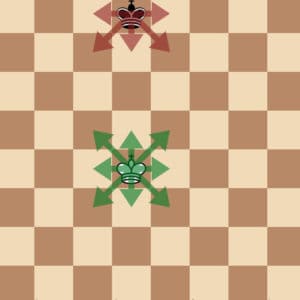
The king is the most important piece in the game. However, it is also the weakest one. The king can move only one square in any direction, whether it is forward, backward, or sideways. The king also has a special and unique move, known as the castling move. The king can never move into a position that is dangerous for him. The game is lost if you lose your king.
Castling is a special rule that applies to the king and the rook. Castling allows you to do two important things:
- Get your king to safety
- Move your rook out of the corner and into the middle of the game.
You can move the king two squares to one side and then shift the rook right next to the king on the opposite side. However, to be able to castle, the following conditions must be fulfilled.
- For the rook, it must be the first move
- For the king, it must be the first move
The path between the king and rook must be clear that no pieces can block them. The king cannot be under “check,” or must not have passed one.
If you castle in one direction, the king will get closer to the side of the chessboard. This is called a “kingside castling.” If you castle to the other side, where the queen sits, it is called a “queenside castling.” No matter what side it takes, the king will move only two squares when castling.
Queen
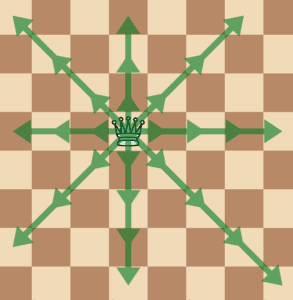
The Queen is the most powerful piece in chess. She can move any number of squares along the rank, file, or diagonal. However, she is not allowed to leap over any other piece. She can attack in any manner she moves. However, like every other piece on the board, if she is captured, she is out of the game.
Rook
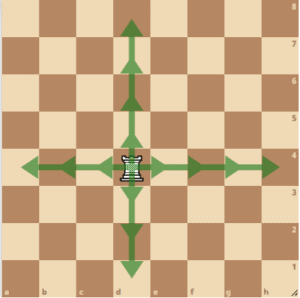
The Rook, commonly known as the castle, may move as far as it can, but it can only move backward, forwards, or sideways. It can also not leap over any other piece. Rooks are considered to be powerful pieces, especially when it comes to protecting and working with each other to attack the opponent. Captures in a chess game are optional. The rook does not necessarily have to make any capture. It is allowed to capture other pieces only if you want it to.
Bishop
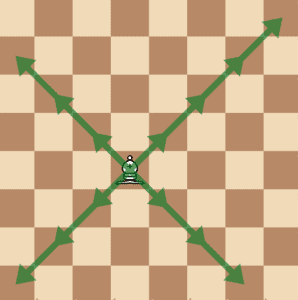
The Bishop can move any number of squares, provided they are all diagonal. It cannot jump over pieces in its way. If the bishop starts on a black square, it has to move diagonally to a black one, and vice versa.
The bishop is good for covering or protecting other pieces on the board. On the board, you will have just two bishops for your chosen color. The one that sits on a white square is allowed to move diagonally on the white, and the black moves only on the black squares, diagonally.
Knight

Compared to all the other pieces, the Knight moves in the most different ways. The head of the knight looks like a horse. It moves three squares in total; two squares in one direction, and then one more box at a right angle.
This results in an “L” shape. It is also the only piece that can move over other chess pieces. The knight can move two squares vertically or horizontally, and then one perpendicularly.
Other pieces can never block the knight. It can easily jump over other pieces and capture the opponent’s pieces. However, if it is placed in a corner, the knight is even more handicapped than the queen or bishop and is even more vulnerable to being captured by the opponent.
Pawn
Pawns, on the other hand, are classified as the most complex pieces on the board. Pawns are unusual because they can capture other pieces and move in different ways. They move forward, but they capture other pieces diagonally. Pawns can only move one square at a time, except for the first move, in which case, the pawns can move two squares forward.
Pawns can capture pieces diagonally in front of them. They can never capture another piece going backward. If a piece is blocking the pawn, it cannot move until the piece in front moves.
Pawn Promotion
If a pawn successfully reaches the other side of the board, then it can become any other piece. This is called a promotion in chess
En Passant
Another rule that applies to pawns is “en passant,” which in French means “in passing.” During a game, if the pawn moves two squares on its first move, and by doing so ends up next to an opponent’s pawn (meaning that this pawn moves two squares away to escape the risk of capture), that pawn then has the option of capturing this first one it passes by.
This move is only possible if the player notices it at first and acts immediately. Otherwise, the option to capture the pawn will expire. Once you understand the names of the pieces and how they move, the next step is to learn how the board is set up.
Related Post: En passant
Setting Up The Chess Board
This is the starting position of the chessboard. The board must be set correctly before starting to place the pieces. The board must be set such that each player has a white square at the bottom right corner of the chessboard.
Starting Position of the Chess Game
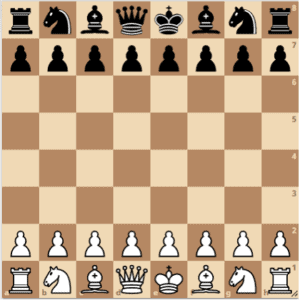
Placing The Pieces
Rooks: Rooks go to the extreme corner squares of the chessboard
Knights: The Knights are placed beside the Rook (b1 and g1 squares for White, b8, and g8 squares for Black)
Bishops: Bishops are placed along the c and f files on the back rank. They sit right beside the Knights.
Queen: There are two last remaining squares. The queen will go on the square of its color. In other terms, if you have the white pieces, The white queen will go on the white square (d1). Similarly, the black queen will go on the black square (d8)
King: The remaining square is where you place the king. The color of the king should be placed on a different colored square. In other terms, a white king must be placed on a dark square(opposite colors)
Pawns: Pawns are placed along the second rank. For Black, it is the 7th rank.
Once you have placed all your pawns, the board is set and complete! You are ready to begin the game.
Related Post: How to set up the chessboard
Understanding Piece Value and Exchanging
As your game progresses, you will find opportunities to capture your opponent’s pieces. However, your opponent may well recapture your men; this is known as an exchange. It is therefore vital that you know the value of each piece, so you can ensure you exchange wisely.
Value of the King
The King cannot be exchanged, but if he is checkmated, the game is lost, so we could say that the King is worth an infinite number of points.
Value of the Queen
The Queen is worth a total of 9 points. The Queen is your most valuable piece. You should always guard her carefully and ensure she stays out of danger.
Value of the Rook
The Rooks are worth 5 points each. They are the second most powerful pieces on the chessboard behind the Queen. Because they can cover so many squares, Rooks are more valuable than Knights and Bishops.
Value of the Bishops
Bishops can move quickly across the whole board, but they are only worth three points each.
Value of the Knights
Knights have the special talent of being able to jump over other pieces, but they are only worth three points.
Value of the Pawns
Pawns are worth the least on the chessboard and have a point value of only 1 point. If you have to make a sacrifice, you would lose the least by sacrificing a pawn.
There are three types of exchanges in chess:
- Good exchanges
- Bad exchanges
- Fair exchanges
Good Exchanges
Here, White will gain five points if he captures the Rook on a8 and will only lose three points if his Bishop is recaptured by the other Rook on f8. This is a good exchange for White.
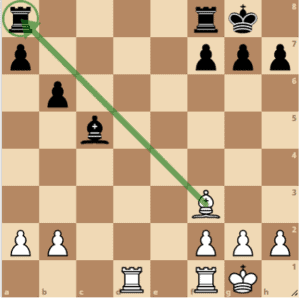
Because Rooks are worth more than Bishops, White is happy to capture the black Rook on a8.
Bad Exchanges
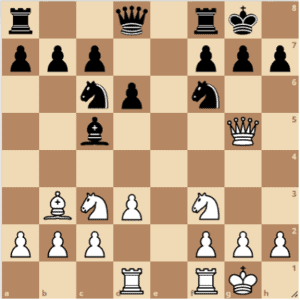
The black Queen is protecting the black Knight on f6. In this situation, if the white queen captures the black Knight on f6, White will gain three points but will lose nine points when his Queen is swiftly recaptured by the black Queen on d8.
Fair Exchanges
Fair exchanges involved the exchanges of pieces of similar point value. For example, exchanging a rook for a rook or a bishop for a bishop are fair exchanges because both rooks are worth 5 points. If the total points on each side of the equation are the same, then you can say the exchange is fair.
To exchange or not to exchange?
It’s good to get used to looking ahead when you are playing a game and being aware of the position of your opponent’s pieces. If your opponent has a sneaky reply, then capturing a valuable piece can sometimes lead to disaster. Have a look at the position below and see if you can work out whether the next move will lead to a good, bad, or fair exchange for White
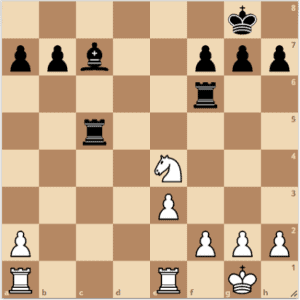
Quiz: Should the White knight capture the rook on c5 or on f6? Which capture will gain the most points for White?
Developing Your Pieces
If you want to start getting good at chess, then you must first master the principle of developing your pieces. At the start of a game when you first move your pieces, you are said to be “developing” them. The four central squares are extremely important in this development and you should always try to attack or occupy these squares because this allows your pieces to control a large area of the board.
Controlling the center of the board
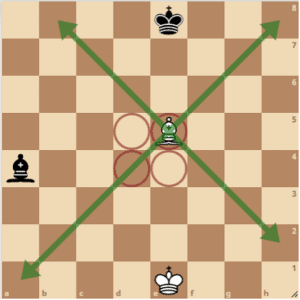
The white Bishop in the center of the board can move to 13 different squares covering every part of the board, whereas the black Bishop on the edge of the board can only move to seven different squares on his right. The white Bishop is almost twice as powerful as his black counterpart
Developing to control the center

In the starting position, the Pawns block in the two Bishops. So on your first move, you should push the Pawn in front of the King two squares forward, freeing the f1 Bishop and giving the Queen some space.
- Black needs to bring out his d7 or e7 Pawns to release his back row pieces
- This Bishop is now free to move into action
In the position below, White has now developed both of his Knights and one Bishop, which are either attacking or occupying the central squares. The Bishop on c1 is still stuck behind the Pawns, o the next step is to move the d2 Pawn to bring him into the game.
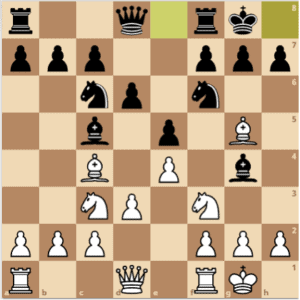
When you have developed all your Knights and Bishops it is important to castle to secure the safety of your King. Your position should now look like this, with all Knights and Bishops safely and centrally developed and your King castled to safety. If you have reached this position then you have played like a chess Grandmaster!
Attack and Defense
When you play chess you should always have a plan. You should always be able to give reasons for the moves that you make. Developing your pieces well is just the first stage in controlling the center of the board, which in turn puts you in a strong position to launch some fierce attacks on your opponent.
An Attacking Plan

If you wish to capture an enemy piece, you must first attack it. Here, when we move our Pawn from b2 to b4 to attack the Black Knight on a5, the Knight is trapped and cannot move to any safe squares.
If the black Knight captured this Pawn, White would recapture
with the d3 Bishop
Successful Attacks
It is often a good idea to attack your opponent with a piece of less value than the piece you are attacking. Here, if White moved his Queen to a4 to attack the Knight, he would not have been successful, because if he captured the Knight, Black would then recapture with her Queen.
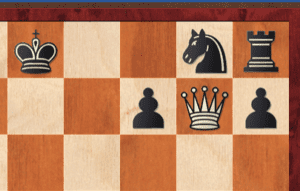
The Rook is trapped. He cannot escape from the attacking Queen.
| Here, the black Rook is helpless against the Queen’s attack. He cannot move to any safe squares and cannot be defended by his own pieces.
When the Queen captures the Rook, White will have made an advantageous capture because the Queen cannot be recaptured. Remember that the Queen is worth nine points more than any other piece. |
Loose Pieces
A wise man once said, “Loose pieces drop off,” or LPDO for short. If your piece is loose, then it is not being defended by any of its army colleagues. Attacking loose pieces can be a very effective winning strategy and you should watch out for opportunities to chop off loose pieces at all times. You should also ensure that your pieces protect each other so they are not loose.
Defending A Piece
Here, the white Bishop is attacking the undefended Knight on f6. If the Knight moves, the Bishop will capture the Rook on d8. Black can defend the Knight by moving her Rook to d6. If White then captures the Knight, Black can recapture with her Rook ‘a fair exchange’.
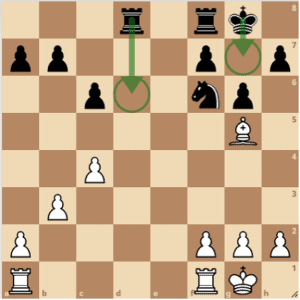
Defending Your King
The most important piece to defend is, of course, your King. Here, the white Queen is threatening checkmate on h7. Black can defend her King by moving her Knight to f6 (Nf6). After which, capturing on h7 would lead to disaster for the white Queen, because the Knight would be able to take her.
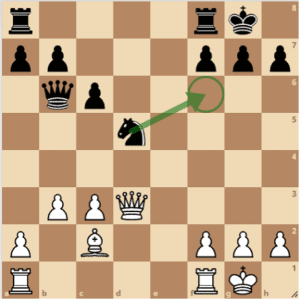
Winning Your First Games – Checkmate For Beginners
So far you’ve learned how to play chess to a certain degree. However, In order to win at chess, you must learn how to checkmate your opponent. Here are a few ways you can checkmate and win some of your first games as a beginner.
Scholar’s Mate For Beginners
Scholar’s Mate, which is also known as the Four-Move Checkmate, is a great way to win some of your first games and it will really impress your friends.
First, move the Pawn in front of your King two squares forward to open up lines for your Queen and f1 Bishop. Then bring your Queen out diagonally as far as she can; go to h5. Next, develop your Bishop to c4. The Queen and Bishop are now both attacking the black Pawn on f7.
Black ignored the deadly threat to f7 and allowed the white Queen to capture the Pawn, giving a swift and deadly checkmate.
Two-Rook Checkmate
Once you’ve chopped off all of your opponent’s pieces, you will often find yourself in a position like this one, but how do you checkmate from here?
You will quickly discover that in positions like these, it’s almost impossible to checkmate the King in the middle of the board. It’s much easier if you can force him onto one of the edges. All you have to remember are these three important rules:
1. Form Your Barrier
This Rook has formed a barrier. The King now cannot move forward as he would be moving into check.
2. Check with the other Rook
If your barrier is in place, then you should check with the other Rook, cutting off more squares from your opponent’s King. The King must now move backward to escape from check. The King is under attack and must move out of check
3. Zoom your Rook out of danger!
If your opponent’s King ever attacks one of your Rooks, you must move him out of danger. Make sure your barrier is still in place and zoom him far away from the enemy King, if possible so he is diagonal to the other Rook.
4. Checkmate!
This process of forcing the King backward will always lead to a checkmate like this. The black King is in check and cannot move to a safe square so it is checkmate!
King and Queen Checkmate
The Queen is a very powerful piece, but when she is left alone, even she isn’t able to checkmate without the help of her King. Once you’ve mastered the King and Queen Checkmate, the number of games you win will shoot through the roof.
Just follow these three steps:
| 1. Form a barrier with the Queen, just as you would in the Two-Rook Checkmate, to cut off the escape squares for the King |
| 2. Move your Queen so she is a knight’s move away from your opponent’s King, making sure your barrier is still in place and then pursue him. Here, the black King is moving one square diagonally, so that is precisely what the Queen should do. |
| 3. The instant your opponent’s King moves into the corner of the board, it’s time to bring your King into action. You must leave your Queen where she is or risk a stalemate disaster. The Queen has the black King trapped and the white King has moved up to the crucial square, to
back up his Queen. White now has the option of delivering five different checkmates, none of which would have been possible without the aid of the King. |
Illustrative example
With practice, this checkmate will become second nature to you. As long as you follow the three simple rules and avoid the dangers of stalemate, you will never go wrong.
- Form the barrier.
- Follow the enemy King.
- Move in for the kill.
Now that you’ve learned a bit about the game of chess, it’s time to turn up your skills a notch. If you are ready for the next level of your chess development, then I highly recommend you go check out “The secrets of chess grandmasters” by GM and chess coach Igor Smirnov. He lays out everything you need to know about how to go from a novice at chess to an expert. Click here to see full review





